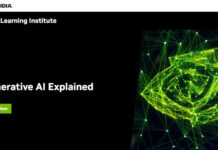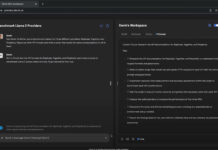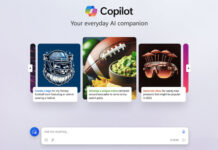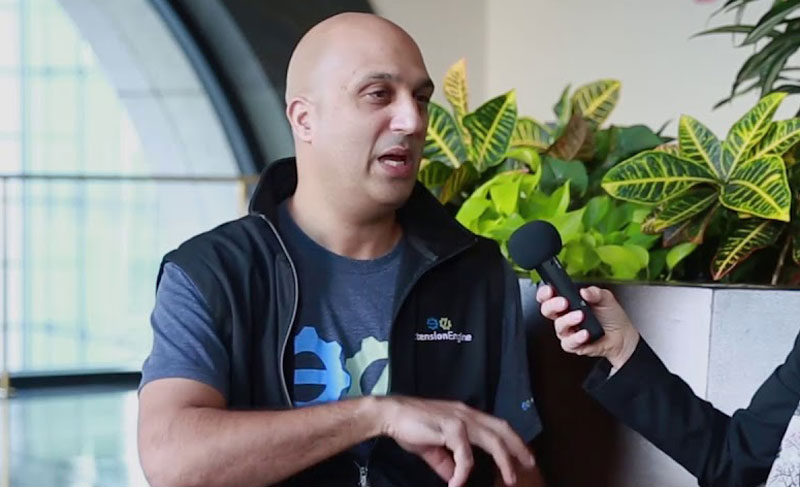Extension Engine’s Furqan Nazeeri Discusses Adult Learning, Revenue-Sharing vs. Fee-for-Service Models, and the OPM Market
Henry Kronk | IBL News
Online students owe their education, in part, to companies that don’t often receive the recognition they’re due. While many institutions of higher ed build their online courses and degree paths internally, others turn to online program managers (OPMs) to fill in any gaps that might remain. While these companies play indispensable roles in online education, many students and faculty are not aware they exist. Extension Engine –which provides Open edX services, too– has been working in the higher ed space for nearly 20 years. IBL News recently got in touch with Furqan Nazeeri, who was worked as a partner at the OPM for 10 years.
Furqan Nazeeri: Actually, before that, I was a customer [of Extension Engine]. At the time, I was an entrepreneur-in-residence at Softbank Capital, one of the investors at my previous company. I had been looking around … I had a project to basically build an academic research product working with the faculty at Harvard Business School. I ended up hiring Extension Engine to help with that project.
It was just a wonderful experience. It took about a year before I decided to join. I love the idea of a service business that’s focused on a specific clientele and really becoming a world expert in solving problems for those clients. I love the idea that we don’t have outside investors. At Extension Engine, we don’t have venture money or outside investors and there’s no debt so it really allows us to focus on our customers and our employees.
Last I heard, the OPM market is worth $2-something billion in revenue, so it’s a huge industry. The vast majority of that is revenue-share, [where, in exchange for services, institutions share a percentage of their online program revenue with their OPM]. We are a small piece along with Noodle, iDesign, and a few others that are in the fee-for-service category. Right now, it’s very small. If you ask me, I’m biased but, even if you ask analysts who cover the OPM industry more generally, they’ll say the fee-for-service is where a lot of growth is going to be.
Henry Kronk: Some OPMs specialize in certain areas of service, while others are more jacks-of-all-trades. Where does Extension Engine fall on this spectrum?
Furqan Nazeeri: I would say our roots are in really innovative technology-based around creating customized learning experiences. We have also built deep, deep expertise in instructional design, (content creation and assessment). We have a small but, I would say, incredibly powerful practice around marketing services in terms of enrollment and recruitment. Those are the three things we really hang our hat on. Over the years, those have evolved.
We started out with technology. We added content. And most recently a few years ago, we added the marketing services.
Henry Kronk: Why does Extension Engine focus on those services?
Furqan Nazeeri: We partner with our clients and we become really integral parts of the overall team. We’ve helped deliver some amazing, innovative programs. As a result, our clients grow to trust us.
When we’ve launched a new service, I’d like to say that I had some Harvard MBA sort of strategy that I was implementing. But the truth of the matter is, our clients came to us and said, “We have this problem. You guys have been a great partner. Is this something you would consider offering as a service?”
A great example is instructional design. This is going back 7 or 8 years. At the time, we had been developing these amazing technology platforms. One of our clients came to us and said, “You guys have been doing great work. We’ve actually been working with this other company on instructional design and content creation. That company has this amazing team there, but the company is going under. Would you guys consider either partnering with them or hiring this team and developing an instructional design practice?”
We said, “That’s interesting, let’s talk to them.” So that has been the evolution. Our client actually introduced us to the people we hired to lead our instructional design team. It was organic growth driven by strong partnerships with our clients.
I think if I’d written a business plan and said, ‘Hey, I’m going to go develop this thing,’ and I tried to sell it to my clients … I think it would have felt like a plumber turning around and saying to someone, “Hey, I just fixed your sink. Do you have full life insurance?”
Henry Kronk: Does Extension Engine have a typical client?
Furqan Nazeeri: So our clients are a mix. Half are higher ed, half are non-profits outside of higher ed. It’s all around digital transformation of adult learning, it’s just half are with institutions of higher ed, half are not.
Of the higher ed, the vast majority are private. They tend to be category leaders, meaning that they could be nationally or globally recognized brands in higher ed like Harvard or MIT, or it could be a top institution in a smaller category, something like an ArtCenter College of Design, which is a top school in industrial design and fine arts.
Henry Kronk: A study by Eduventures about a year ago found that colleges who partnered with an OPM were more likely to increase enrollment online than those who had not. But the report also described how this broad stroke of a statement obscures more granular data and, at the end of the day, some online programs are very successful and some are not, regardless of whether or not an OPM is involved.
This is a tangent, but I’ve read elsewhere that marriage counselors can tell within minutes of their first meeting with a couple whether or not the marriage will be saved. Are you able to tell whether or not an online course or program will be successful before it launches?
Furqan Nazeeri: I think it’s pretty hard to screw up an online program. Try and do some research on failed online degree programs. There’s underreporting, right? People don’t go reporting “This program blew up.” But I’d say for every blown up, failed program, there has got to be 50 successful ones or something like that.
Rising tides lift all boats. Sure, there are some boats that have 10 holes in the bottom, and they sink. But it’s not like half of these programs fail. It’s far from that. If you go back 10 years, it was very expensive and it was considered very risky to go online. If you think about 10 years ago, the University of Phoenix was the big name online in terms of degree programs.
Everybody kind of looked down their nose at them as a for-profit. If you look at online degrees nowadays, there are close to 300 different institutions offering a fully online MBA in the U.S. 300. There are only, I think, maybe 500 residential programs.
The National Center for Education Statistics (NCES) showed that, in 2016, 28% of graduate students in the U.S. enrolled in online-only programs.
When I graduated from college, it was 1995. If you were dating somebody and someone asked you where did you meet your partner, you wouldn’t be caught dead telling someone you met online. You would make up a story and say, “Oh I met them at the library or the club or something.”
But if you talk to someone who just graduated college today, it’s sort of assumed that they met whoever they’re dating online. More than half of people meet whoever they’re dating online. I think that same transition has happened in higher ed. It’s considered incredibly normal. If you’re a Master’s of Nursing student, more than half the students you encounter are in an online program. It’s considered totally normal.
To wind it back to the original question, it’s hard to answer because so few of them actually fail.
Henry Kronk: I guess it depends on what your criteria for success are. NCES data shows that online degree programs still have much worse 6-year graduation rates than their brick-and-mortar versions.
Furqan Nazeeri: I think it’s a super important point. The data on this requires a deeper understanding. There’s just so many factors going on here. I was at a conference a few years ago. Someone was talking about student success and they had research data that showed something like 70% of the reasons that students dropped out and didn’t finish a program were for non-academic reasons. You know, their spouse lost their job, they had a kid, they were forced to move—all these things that didn’t have to do necessarily with the quality of the academic program. Although there are things like mentoring and coaching and student services that can help to mitigate some of these non-academic challenges.
But I wonder when you’re looking at in-person vs. online, how much of that is selection bias? You know, the people enrolling on campus have fewer of those academic constraints? I think unless you control for some of those things, it’s hard to attribute those completion rates to quality of instruction. Community colleges have on average I think, what, a 15% 6-year completion rate. It’s not that the professor teaching algebra at community college is 80% worse than the college professor teaching it at BU. It’s a selection bias problem.
Henry Kronk: So let’s talk revenue models. You mentioned before that you don’t know why someone would enter into a revenue-share agreement with an OPM. I can think of a few. For one, it’s cheaper up front.
Furqan Nazeeri: Doing it rev-share doesn’t actually make it cheaper. It actually makes it more expensive. It does impact budget and cash-flow. With the rev-share, you don’t have to go make a budget request and come up with the money up front. But you pay for it as a percent of revenue over 10 years (more or less). It’s not like an OPM doing a rev-share has some magical thing they can offer or a cheaper way of doing something.
It’s less cash-flow up front. For a lot of institutions, it’s much easier to sign a commercial contract and not have to go make a budget request. There’s definitely some really strong financial reasons to go with a rev-share. And by the way, most of the industry is rev-share, so it’s not like this is some unusual thing. I think you’re starting to see more and more institutions look specifically for fee-for-service or at least consider it. There have been a lot of RFPs out recently that specifically mention fee-for-service.
Cash-flow and finances are reason #1 for sure. The perceived risk mitigation is another big one.
On the other side of the balance sheet, there are some tradeoffs of signing with a rev-share deal. One is length of contract. It’s usually a 10 year contract. Some might be a little shorter, some might be a little longer. One of the challenges with a 10-year contract is often times, you’re solving a 2-year problem in terms of cash-flow with a 10-year contract, which is always tricky. Who knows in 10 years what the right bet will be in terms of partner and technology and platform, and things like that? That’s a difficult decision to make.
If you, in 2005, are a telecom company making a 10-year decision, it would be hard to see Apple coming out with the iPhone.
I think there’s also something that, more and more, higher ed is becoming aware of, which is capacity development. Let’s say a university gives its president, provost, and/or deans a mandate to launch a digital transformation effort. So you’re building capacity online. If you sign a 10-year deal with the rev-share OPM, 10 years go by. At the end of that period, you haven’t developed any internal capacity for designing, building, launching, or running a successful online program. You’ve outsourced that to a 3rd party. When that contract comes up for renewal, you really don’t have much choice. You have this rev-share stream coming in that you’ve become addicted to. It’s funding other programs and initiatives. But you don’t have any capacity. So you’re forced to renew.
If you look at universities that are now beginning to come up on that contract renewal period … Simmons College comes to mind. They just renewed with 10 or 15 years with 2U. For Simmons, that was the only real decision that they had. They didn’t have any internal capacity, so they needed to renew that contract.
For a university, signing that first 10-year contract, you’re essentially signing away your digital future.
I think the fee for service is a way of building internal capacity. First of all, it’s not a long-term contract. But second of all, it’s not a bundle. You can say, “I need surge capacity to help with technology and course development, or marketing, or enrollment services.” As time goes by, and you hire internal staff, you can build internal capacity. That, I think is very important for universities of the future—to not only have a digital platform, but have the core capacity for delivering that digital experience within the core capabilities of the institution.
Henry Kronk: And who knows what online programs will look like in 10 years?
Furqan Nazeeri: The most entertaining thing to do is to go on the Wayback Machine. You can go back to 2005 and look at websites and it’s got like the Cha-Cha Baby from GeoCities and stuff.
The same thing is going to happen. It’s not like innovation is slowing down. In 10 years, it’s entirely possible we might have augmented reality, virtual reality, artificial intelligence—there’s so many different vectors of innovation that it just seems hard to commit your digital future to a single outsourced partner.
By the way, if you look at the market, 2/3 of universities that launched graduate programs have come to the same conclusion, right? They’ve done it internally or with staffing contractors or fee-for-service providers or others while a third of them have signed on to a revenue share OPM.
Henry Kronk: Extension Engine has a stated mission to “help every person get a great education, which ultimately will make the world a better place.” When it comes to online learning, many people believe it has the potential to increase equity in education. And there’s a lot to indicate that it has improved access for certain people, such as parents raising kids. A lot of data, however, also indicates that the same or similar academic achievement exhibited in brick-and-mortar institutions plays out online. How would you weigh in on this issue?
Furqan Nazeeri: It’s not a panacea. Online is not going to solve the income inequality that we see in the U.S. or the world, but it definitely helps. We worked with in 2017 a client who had launched an university in Africa online offering a bachelor’s degree competency based. The tuition price point is $3,000. For a bachelor’s degree. Not $3,000 a year, not $3,000 per semester, but $3,000 for the entire degree.
That’s not something you can do with a brick-and-mortar university, certainly not at scale. I think there is an opportunity to have an impact. I think it’s also challenging to structure. Getting into Harvard is insanely difficult for a degree program. But Harvard Business School online offers amazing quality online learning experiences at a fraction of the price. They’re still expensive, but they’re way cheaper than a degree and they’re accessible. Most people who are interested can get access to it. Now, 10s of thousands of people have been through these learning experiences.
It can be life-changing. I do think online can enable new forms of education delivery, but it can also make the existing brick-and-mortar face-to-face experience better, faster, cheaper. I’m bullish on online.






















